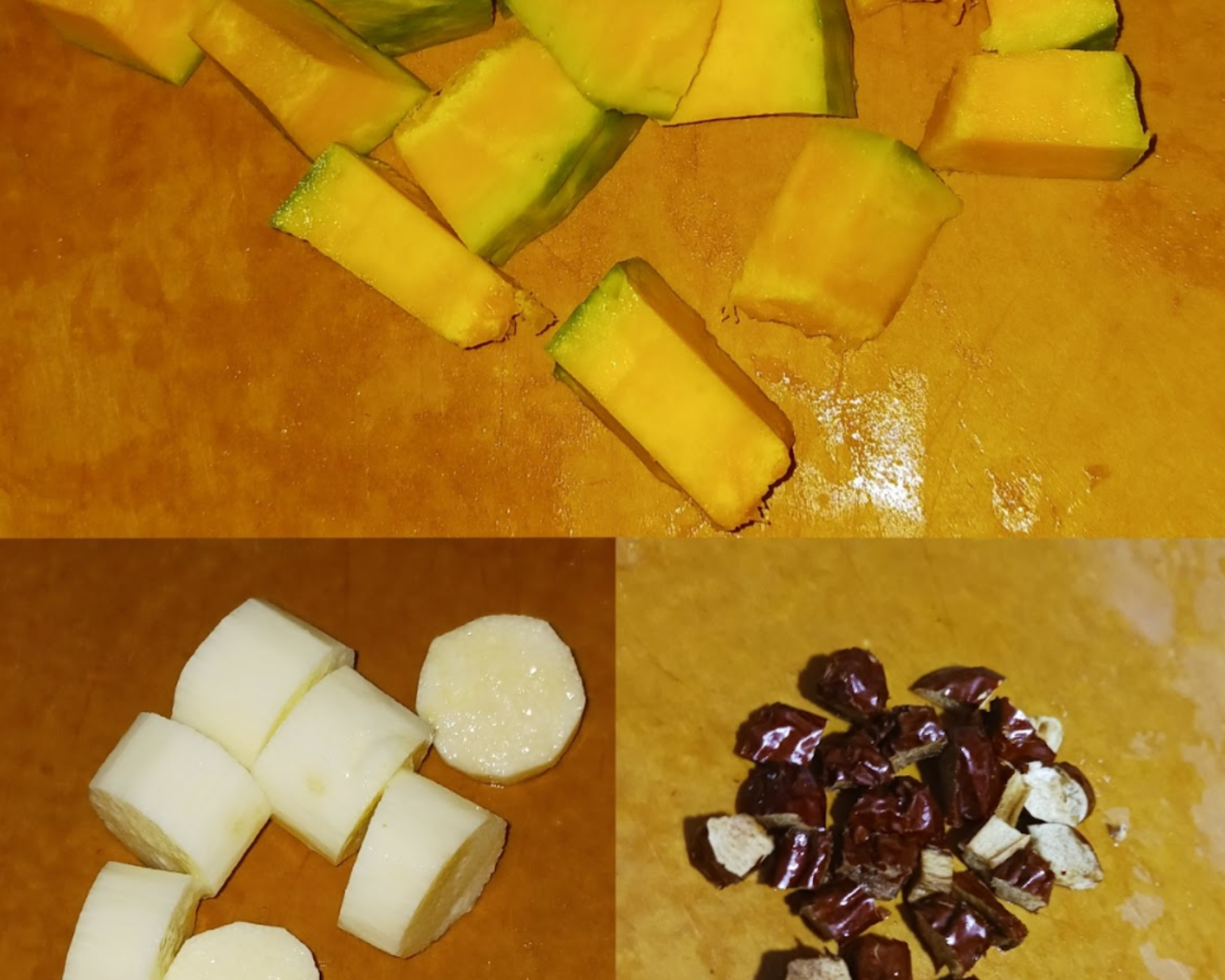1. Rinse the white rice, millet, and quinoa with water, then soak them for 20 minutes.
2. Peel the pumpkin and Chinese yam, and remove the pits from the red dates.
3. Cut the pumpkin and red dates into small pieces, and slice the Chinese yam.

4. Pour water and milk into a pot, bring it to a boil, then add the white rice, millet, quinoa, pumpkin, Chinese yam, and red dates to the pot. Reduce the heat to medium once the water boils again, cook uncovered for 20 minutes, then turn off the heat and cover the pot for an additional 10 minutes. (If using a multi-function rice cooker or pressure cooker, simply add all the ingredients and select the "congee" function.)
5. Add ground pork and bring to a boil again, then season with salt.
Recipe prepared by Mr. Anson Chu (Outstanding recipe of Healthy Recipe Competition 2024)
Nutritional value: Yeung King Tung Kary (Research assistant, Department of Clinical Oncology, HKU)
Nutritional value reviewed by Dr. Daphne Wu (Food & Nutritional Science, HKU)


